
Code_Aster
®
Version
6.4
Titrate:
SDLD27 - System mass-arises with 8 degrees of freedom
Date:
17/02/04
Author (S):
E. BOYERE
Key
:
V2.01.027-C
Page:
1/14
Manual of Validation
V2.01 booklet: Linear dynamics of the discrete systems
HT-66/04/005/A
Organization (S):
EDF-R & D/AMA
Manual of Validation
V2.01 booklet: Linear dynamics of the discrete systems
V2.01.027 document
SDLD27 - System mass-arises with 8 degrees
of freedom with viscous shock absorber not
proportional (analyzes modal)
Summary:
This two-dimensional problem consists in seeking the frequencies, the modes of vibration and them
depreciation of a mechanical structure made up of masses, springs and shock absorbers viscous. It
case-test of Mechanics of the Structures corresponds to a dynamic analysis of a discrete model having one
linear behavior.
This test allows a complete validation of the options of discrete modeling of rigidity, of damping
viscous and of mass (without finite elements) offered by the control
AFFE_CARA_ELEM
[U4.42.01]. Five
different modelings are proposed: the modeling of the discrete elements is either in translation, or in
translation/rotation and is written either in total reference mark, or in local reference mark. In addition, different
functionalities of the controls
MODE_ITER_INV
[U4.52.04] (search for eigenvalues per iteration
opposite),
MODE_ITER_SIMULT
[U4.52.03] (search for eigenvalues by the method of Lanczos) and
NORME_MODE
[U4.52.11] (definition of the standard of a clean vector) are tested for this problem
quadratic.
This test refers to a test VPCS, but it was modified. Indeed, the Aster test directs the mechanical system
on an axis
3y
= 4x
, which makes it possible to validate the input of the data in local reference mark. The results obtained are
in concord with the results of reference.
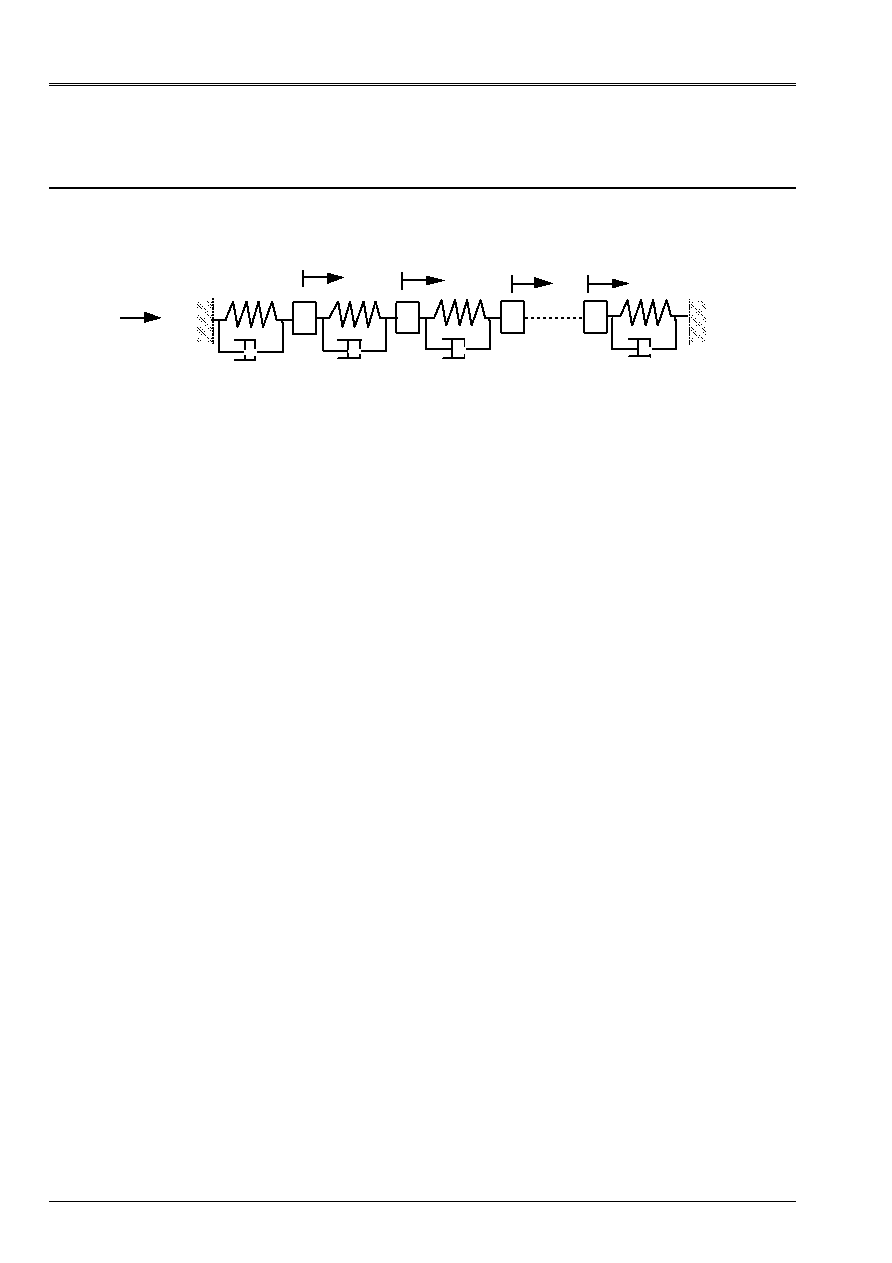
Code_Aster
®
Version
6.4
Titrate:
SDLD27 - System mass-arises with 8 degrees of freedom
Date:
17/02/04
Author (S):
E. BOYERE
Key
:
V2.01.027-C
Page:
2/14
Manual of Validation
V2.01 booklet: Linear dynamics of the discrete systems
HT-66/04/005/A
1
Problem of reference
1.1 Geometry
X, U
p1
U1
With
C
m
DC
K
K
m
p2
U2
m
C
K
p3
U3
m
Cd
K
p8
B
U8
Specific masses:
m
P1
= m
P2
= m
P3
= ...... = m
P8
= m
Stiffnesses of connection:
K
AP1
= K
P1P2
= K
P2P3
= ...... = K
P8B
= K
Viscous damping:
C
P1P2
= C
P2P3
= ...... = C
P7P8
= C
C
AP1
= DC
C
P8B
= Cd
1.2
Material properties
Comes out from linear elastic translation
K =
10
5
NR/m
Specific mass
m =
10 kg
One-way viscous shock absorbers
C =
50 NR/(m/s)
DC =
250 NR/(m/s)
Cd =
25 NR/(m/s)
1.3
Boundary conditions and loadings
Embedded points A and B: (U = 0).
1.4 Conditions
initial
Without object for the modal analysis.

Code_Aster
®
Version
6.4
Titrate:
SDLD27 - System mass-arises with 8 degrees of freedom
Date:
17/02/04
Author (S):
E. BOYERE
Key
:
V2.01.027-C
Page:
3/14
Manual of Validation
V2.01 booklet: Linear dynamics of the discrete systems
HT-66/04/005/A
2
Reference solution
2.1
Method of calculation used for the reference solution
The reference solution is that given in card SDLD27 of guide VPCS.
The problem led to seek the eigenvalues and clean vectors of the dissipative system
according to:
M
C
K
&&
&
U
U
U
+
+
= 0
with
M
stamp of mass,
C
stamp damping,
K
stamp rigidity.
One associates this dissipative problem, the conservative problem:
K
M
U
U
+
=
& & 0
. In form
harmonic, it is written
K
M
-
=
2
0
.
Are
[]
=
v2
the spectral diagonal matrix of the eigenvalues of this conservative system and
[]
=
v
the corresponding matrix of the clean vectors.
v
are standardized such as:
T
T
M
Id
K
=
=
.
The solutions of the dissipative system are form:
U U.E.
O
St
=
from where
(
)
Ms
Cs K U
O
2
0
+
+
=
)
.
One breaks up
U
O
in the base of
v
. One has then
U
Q
O
=
, from where:
(
)
Is
S
Q
2
0
+ +
=
with
=
T
C
(full matrix)
This problem with the eigenvalues is solved by a method of power reverses while taking for
initial estimate
S
J
v
v
=
.
2.2
Results of reference
8 depreciation and Eigen frequencies of the system, as well as the 1
Er
and 8
ième
mode (complexes).
2.3
Uncertainty on the solution
Semi-analytical solution.
2.4 References
bibliographical
[1]
J. PIRANDA - Note of use of the software of modal analysis MODAN - Version 0.2 (1990)
Laboratory of Mechanics Applied - University of Franche-Comté - Besancon (France)
[2]
Guide VPCS. Complement Groups Dynamic. September 94

Code_Aster
®
Version
6.4
Titrate:
SDLD27 - System mass-arises with 8 degrees of freedom
Date:
17/02/04
Author (S):
E. BOYERE
Key
:
V2.01.027-C
Page:
4/14
Manual of Validation
V2.01 booklet: Linear dynamics of the discrete systems
HT-66/04/005/A
3 Modeling
With
3.1
Characteristics of modeling
Discrete element of rigidity in translation
DIS_T
With
B
P
1
y
X
P
2
P
3
P
4
P
5
P
6
P
7
P
8
Characteristics of the elements
DISCRETE:
with nodal masses
in all the nodes
M_T_D_N
in absolute reference mark
(m = 10.)
matrices of rigidity
in all the meshs
M_T_D_L
in absolute reference mark
(K
X
= 1.10
5
)
matrices of damping
internal meshs
A_T_D_L
in absolute reference mark
(C
X
= 50.)
initial mesh
A_T_D_L
in absolute reference mark
(C
X
= 250.)
net final
A_T_D_L
in absolute reference mark
(C
X
= 25.)
Limiting conditions:
DDL_IMPO:
(ALL:“YES” DY: 0. , DZ: 0. )
with the nodes ends
(NODE: (A B) DX: 0. )
Names of the nodes: WITH, P
1
,
P
2
,…., P
8
, B
3.2
Characteristics of the mesh
A number of nodes:
10
A number of meshs and types:
9 SEG2 and 8 POI1
3.3 Functionalities
tested
Controls
DISCRETE AFFE_CARA_ELEM
GROUP_MA
“K_T_D_L'
“A_T_D_L'
NODE
“M_T_D_N'
AFFE_CHAR_MECA DDL_IMPO
ALL
LIAISON_DDL
NODE
AFFE_MATERIAU ALL
AFFE_MODELE ALL
“MECHANICAL”
“DIS_T'
GROUP_NO
“DIS_T'
DEFI_MATERIAU ELAS
MODE_ITER_SIMULT METHOD
“TRI_DIAG”
CALC_FREQ
OPTION
“PLUS_PETITE”
NMAX_FREQ
NORM_MODE NORMALIZES MASS_GENE

Code_Aster
®
Version
6.4
Titrate:
SDLD27 - System mass-arises with 8 degrees of freedom
Date:
17/02/04
Author (S):
E. BOYERE
Key
:
V2.01.027-C
Page:
5/14
Manual of Validation
V2.01 booklet: Linear dynamics of the discrete systems
HT-66/04/005/A
4
Results of modeling A
4.1 Values
tested
Frequency Reference
Aster %
Difference
Command of the clean mode 1
5.53
5.529
0.015
Command of the clean mode 2
10.90
10.896
0.037
Command of the clean mode 3
15.93
15.927
0.019
Command of the clean mode 4
20.45
20.452
0.011
Command of the clean mode 5
24.34
24.336
0.019
Command of the clean mode 6
27.49
27.486
0.019
Command of the clean mode 7
29.84
29.835
0.01
Command of the clean mode 8
31.29
31.295
0.015
Damping Reference
Aster %
Difference
Command of the clean mode 1
1.521e-2
1.5209e-2
0.007
Command of the clean mode 2
2.877e-2
2.8757e-2
0.043
Command of the clean mode 3
3.960e-2
3.9565e-2
0.09
Command of the clean mode 4
4.709e-2
4.7034e-2
0.119
Command of the clean mode 5
5.098e-2
5.0917e-2
0.1240
Command of the clean mode 6
5.183e-2
5.1770e-2
0.126
Command of the clean mode 7
5.115e-2
5.1084e-2
0.128
Command of the clean mode 8
5.036e-2
5.0296e-2
0.126
Nature of the mode
clean
Not Mode
clean
Reference in 10
3
Real part
Imaginary part
Clean mode Aster
Real part
Imaginary part
% Difference
Translation 1
(
Dy
)
1
P1
P2
P3
P4
P5
P6
P7
P8
4.07, 4.56
7.97, 8.28
10.9, 11.0
12.5, 12.5
12.5, 12.4
11.1, 10.9
8.24, 8.04
4.41, 4.25
4.0735, 4.5552
7.9652, 8.2846
10.882, 11.026
12.468, 12.541
12.594, 12.398
11.058, 10.865
8.2355, 8.0376
4.4055, 4.2529
0.096
0.058
0.205
0.315
0.168
0.349
0.045
0.088
Translation 8
(
Dy
)
8
P1
P2
P3
P4
P5
P6
P7
P8
2.23, 1.14
3.71, 2.98
4.75, 4.41
5.25, 5.27
5.14, 5.43
4.44, 4.88
3.23, 3.69
1.66, 2.01
2.2336, 1.1391
3.7107, 2.9759
4.7547, 4.4145
5.2487, 5.2688
5.1389, 5.4291
4.4401, 4.8766
3.2340, 3.6852
1.6596, 2.0121
0.15
0.087
0.101
0.024
0.019
0.052
0.128
0.081
Clean mode normalized with the unit modal mass:
it
C
I
+ 2
I
it
M
I
= 1
: is the eigenvalue associated damping and the Eigen frequency.
4.2
Contents of the file results
8 depreciation and Eigen frequencies, as well as the associated clean vectors.
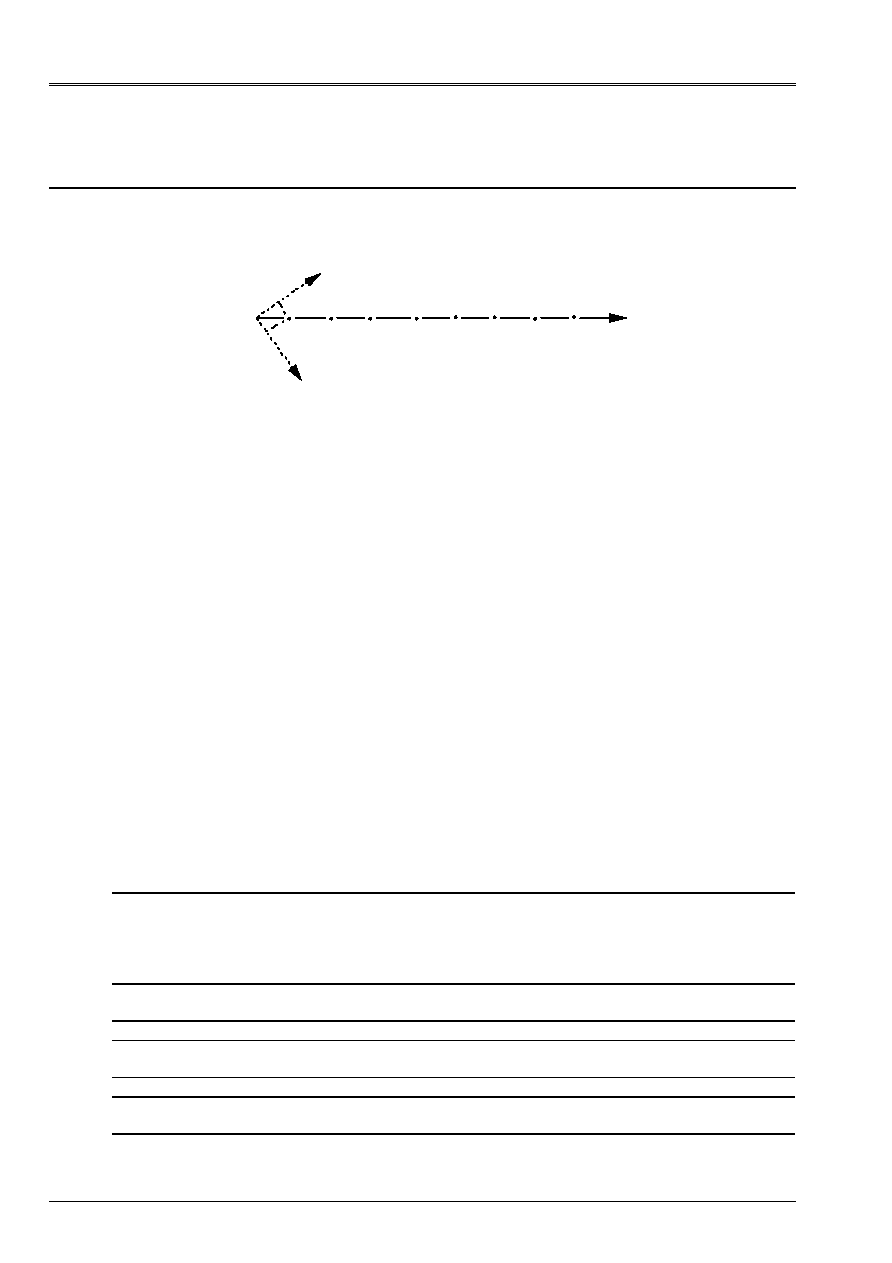
Code_Aster
®
Version
6.4
Titrate:
SDLD27 - System mass-arises with 8 degrees of freedom
Date:
17/02/04
Author (S):
E. BOYERE
Key
:
V2.01.027-C
Page:
6/14
Manual of Validation
V2.01 booklet: Linear dynamics of the discrete systems
HT-66/04/005/A
5 Modeling
B
5.1
Characteristics of modeling
Discrete element of rigidity in translation
DIS_T
Y
X
0.3
0.4
P
1
X
P
2
P
3
P
4
P
5
P
6
P
7
P
8
Characteristics of the elements
ORIENTATION:
in all the nodes
with an angle
= 53.130102°
DISCRETE:
with nodal masses
in all the nodes
M_T_D_N
in absolute reference mark
(m = 10.)
matrices of rigidity
in all the meshs
K_T_D_L
in local reference mark
(K
X
= 1.10
5
)
with the nodes ends
K_T_D_N
in local reference mark
(K
X
= 1.10
5
)
matrices of damping
internal meshs
A_T_D_L
in local reference mark
(C
X
= 50.)
initial mesh
A_T_D_N
in local reference mark
(C
X
= 250.)
net final
A_T_D_N
in local reference mark
(C
X
= 25.)
Limiting conditions:
DDL_IMPO:
(ALL:“YES” DZ: 0. )
LIAISON_DDL:
(such as
3Dy=4Dx
in all the nodes)
Names of the nodes: P
1
,
P
2
,…., P
8
5.2
Characteristics of the mesh
A number of nodes:
8
A number of meshs and types:
7 SEG2
The points P
1
and P
8
are connected to a fixed fictitious point by nodal springs (K_T_D_N, A_T_D_N) it
who allows not to modelize the nodes A and B.
5.3 Functionalities
tested
Controls
DISCRETE AFFE_CARA_ELEM GROUP_MA
“K_T_D_L'
“A_T_D_L'
NODE
“K_T_D_N'
“A_T_D_N'
GROUP_NO
“M_T_D_N'
AFFE_CHAR_MECA DDL_IMPO ALL
LIAISON_DDL
NODE
AFFE_MATERIAU ALL
“MECHANICAL” AFFE_MODELE VERY
“DIS_T'
GROUP_NO
“DIS_T'
DEFI_MATERIAU ELAS
MODE_ITER_INV CALC_FREQ
OPTION
“ADJUSTS”
FREQ
NORM_MODE NORMALIZES
MASS_GENE

Code_Aster
®
Version
6.4
Titrate:
SDLD27 - System mass-arises with 8 degrees of freedom
Date:
17/02/04
Author (S):
E. BOYERE
Key
:
V2.01.027-C
Page:
7/14
Manual of Validation
V2.01 booklet: Linear dynamics of the discrete systems
HT-66/04/005/A
6
Results of modeling B
6.1 Values
tested
Frequency Reference
Aster %
Difference
Command of the clean mode 1
5.53
5.529
0.015
Command of the clean mode 2
10.90
10.897
0.025
Command of the clean mode 3
15.93
15.934
0.026
Command of the clean mode 4
20.45
20.469
0.093
Command of the clean mode 5
24.34
24.360
0.082
Command of the clean mode 6
27.49
27.510
0.075
Command of the clean mode 7
29.84
29.849
0.030
Command of the clean mode 8
31.29
31.298
0.028
Damping Reference
Aster %
Difference
Command of the clean mode 1
1.521e2
1.5208e2
0.007
Command of the clean mode 2
2.877e2
2.8743e2
0.093
Command of the clean mode 3
3.960e2
3.9497e2
0.259
Command of the clean mode 4
4.709e2
4.6910e2
0.381
Command of the clean mode 5
5.098e2
5.0792e2
0.369
Command of the clean mode 6
5.183e2
5.1689e2
0.270
Command of the clean mode 7
5.115e2
5.1056e2
0.184
Command of the clean mode 8
5.036e2
5.0290e2
0.139
Nature of the mode
clean
Not Mode
clean
Reference in 10
3
Real part
Imaginary part
Clean mode Aster
Real part
Imaginary part
% Difference
Translation 1
(
Dy
)
1
P1
P2
P3
P4
P5
P6
P7
P8
2.442, 2.736
4.782, 4.968
6.54, 6.6
7.5, 7.5
7.5, 7.44
6.66, 6.54
4.944, 4.824
2.646, 2.55
2.4440, 2.7331
4.7791, 4.9707
6.5293, 6.6158
7.4801, 7.4725
7.5177, 7.4388
6.6351, 6.5189
4.9413, 4.8226
2.6433, 2.5518
0.0963
0.0577
0.2048
0.3155
0.1679
0.3491
0.0445
0.0877
Translation 8
(
Dy
)
8
P1
P2
P3
P4
P5
P6
P7
P8
1.338, 0.684
2.226, 1.788
2.85, 2.646
3.15, 3.162
3.084, 3.258
2.664, 2.928
1.938, 2.214
0.996, 1.206
1.2892, 0.7585
2.2318, 1.7719
2.8521, 2.6475
3.1509, 3.1548
3.0841, 3.2532
2.6657, 2.9208
1.9401, 2.2089
1.0061, 1.1985
5.9257
0.5976
0.0659
0.1615
0.1064
0.1855
0.1851
0.8025
Clean mode normalized with the unit modal mass:
it
C
I
+ 2
I
it
M
I
= 1
: is the eigenvalue associated damping and the Eigen frequency.
6.2
Contents of the file results
8 depreciation and Eigen frequencies, as well as the associated clean vectors.
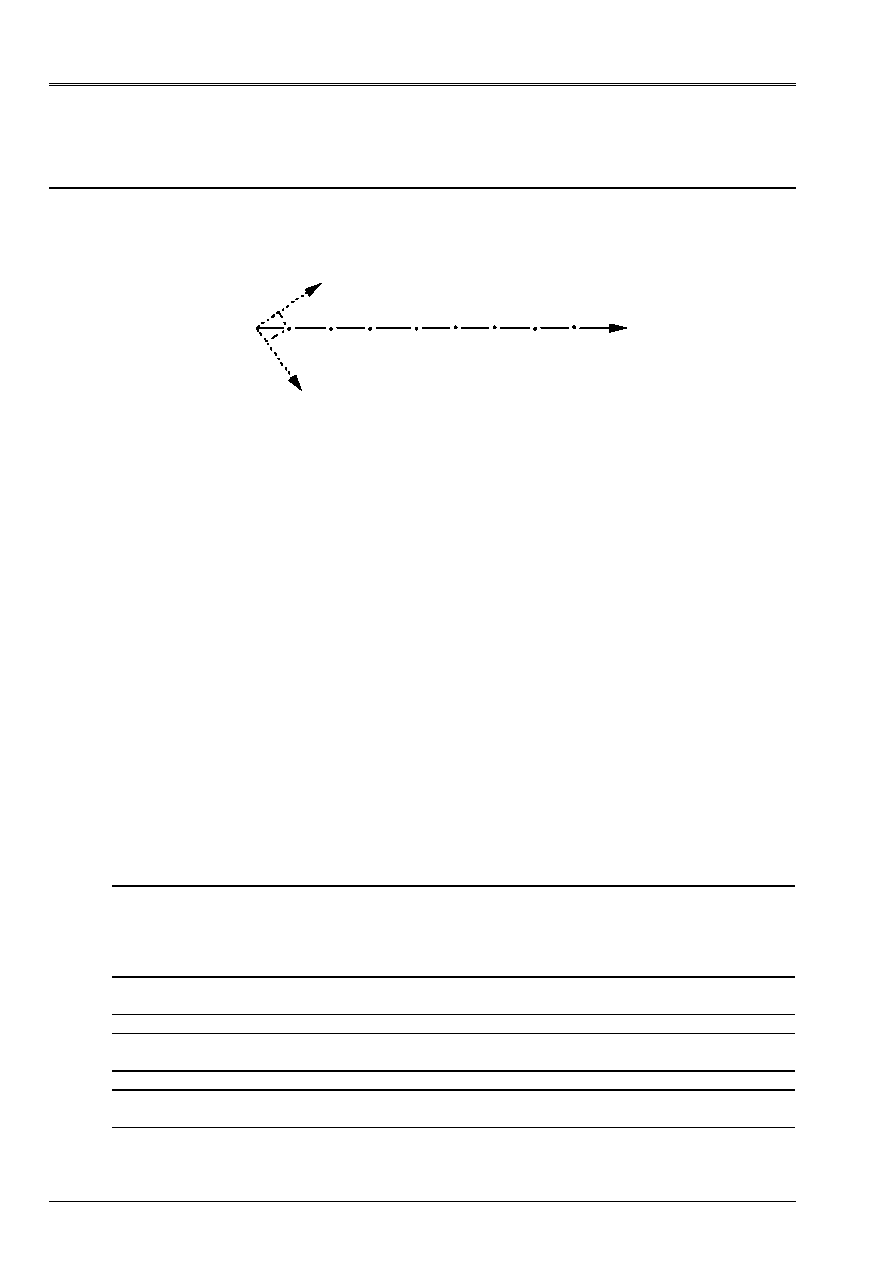
Code_Aster
®
Version
6.4
Titrate:
SDLD27 - System mass-arises with 8 degrees of freedom
Date:
17/02/04
Author (S):
E. BOYERE
Key
:
V2.01.027-C
Page:
8/14
Manual of Validation
V2.01 booklet: Linear dynamics of the discrete systems
HT-66/04/005/A
7 Modeling
C
7.1
Characteristics of modeling
Discrete element of rigidity in translation
DIS_T
Y
X
0.3
0.4
P
1
X
P
2
P
3
P
4
P
5
P
6
P
7
P
8
Characteristics of the elements
ORIENTATION:
in all the nodes
with an angle
= 53.130102°
DISCRETE:
with nodal masses
in all the nodes
M_T_N
in absolute reference mark
(m = 10.)
matrices of rigidity
in all the meshs
K_T_L
in local reference mark
(K
X
= 1.10
5
)
with the nodes ends
K_T_N
in local reference mark
(K
X
= 1.10
5
)
matrices of damping
in all the meshs
A_T_L
in local reference mark
(C
X
= 50.)
with the initial node
A_T_N
in local reference mark
(C
X
= 250.)
with the final node
A_T_N
in local reference mark
(C
X
= 25.)
Limiting conditions:
DDL_IMPO:
(ALL:“YES” DZ: 0. )
LIAISON_DDL:
(such as
3Dy=4Dx
in all the nodes)
Names of the nodes: P
1
,
P
2
,…., P
8
7.2
Characteristics of the mesh
A number of nodes:
8
A number of meshs and types:
7 SEG2
The points P
1
and P
8
are connected to a fixed fictitious node by nodal springs (K_T_N, A_T_N).
7.3 Functionalities
tested
Controls
DISCRETE AFFE_CARA_ELEM GROUP_MA
“K_T_L'
“A_T_L'
NODE
“K_T_N'
“A_T_N'
GROUP_NO
“M_T_N'
AFFE_CHAR_MECA DDL_IMPO ALL
LIAISON_DDL
NODE
AFFE_MATERIAU ALL
“MECHANICAL” AFFE_MODELE VERY
“DIS_T'
GROUP_NO
“DIS_T'
DEFI_MATERIAU ELAS
MODE_ITER_INV CALC_FREQ
OPTION
“SEPARATE”
FREQ
NORM_MODE NORMALIZES
MASS_GENE

Code_Aster
®
Version
6.4
Titrate:
SDLD27 - System mass-arises with 8 degrees of freedom
Date:
17/02/04
Author (S):
E. BOYERE
Key
:
V2.01.027-C
Page:
9/14
Manual of Validation
V2.01 booklet: Linear dynamics of the discrete systems
HT-66/04/005/A
8
Results of modeling C
8.1 Values
tested
Frequency Reference
Aster %
Difference
Command of the clean mode 1
5.53
5.529
0.015
Command of the clean mode 2
10.90
10.897
0.025
Command of the clean mode 3
15.93
15.934
0.026
Command of the clean mode 4
20.45
20.469
0.0931
Command of the clean mode 5
24.34
24.360
0.082
Command of the clean mode 6
27.49
27.510
0.074
Command of the clean mode 7
29.84
29.849
0.032
Command of the clean mode 8
31.29
31.298
0.027
Damping Reference
Aster %
Difference
Command of the clean mode 1
1.521e2
1.5208e2
0.007
Command of the clean mode 2
2.877e2
2.8743e2
0.093
Command of the clean mode 3
3.960e2
3.9497e2
0.26
Command of the clean mode 4
4.709e2
4.6911e2
0.379
Command of the clean mode 5
5.098e2
5.0790e2
0.373
Command of the clean mode 6
5.183e2
5.1691e2
0.269
Command of the clean mode 7
5.115e2
5.1062e2
0.171
Command of the clean mode 8
5.036e2
5.0283e2
0.151
Nature of the mode
clean
Not Mode
clean
Reference in 10
3
Real part
Imaginary part
Clean mode Aster
Real part
Imaginary part
% Difference
Translation 1
(
Dy
)
1
P1
P2
P3
P4
P5
P6
P7
P8
2.442, 2.736
4.782, 4.968
6.54, 6.6
7.5, 7.5
7.5, 7.44
6.66, 6.54
4.944, 4.824
2.646, 2.55
2.4441, 2.7331
4.7791, 4.9707
6.5293, 6.6158
7.5481, 7.4725
7.5177, 7.4388
6.6351, 6.5189
4.9413, 4.8226
2.6433, 2.5518
0.096
0.058
0.205
0.315
0.168
0.349
0.044
0.088
Translation 8
(
Dy
)
8
P1
P2
P3
P4
P5
P6
P7
P8
1.338, 0.684
2.226, 1.788
2.85, 2.646
3.15, 3.162
3.084, 3.258
2.664, 2.928
1.938, 2.214
0.996, 1.206
1.2889, 0.7533
2.2326, 1.7638
2.8538, 2.6402
3.1525, 3.1519
3.0846, 3.2560
2.6650, 2.9280
1.9388, 2.2171
1.0050, 1.2038
5.651
0.879
0.178
0.233
0.046
0.027
0.11
0.594
Clean mode normalized with the unit modal mass:
it
C
I
+ 2
I
it
M
I
= 1
is the eigenvalue associated damping and the Eigen frequency.
8.2
Contents of the file results
8 depreciation and Eigen frequencies, as well as the associated clean vectors.
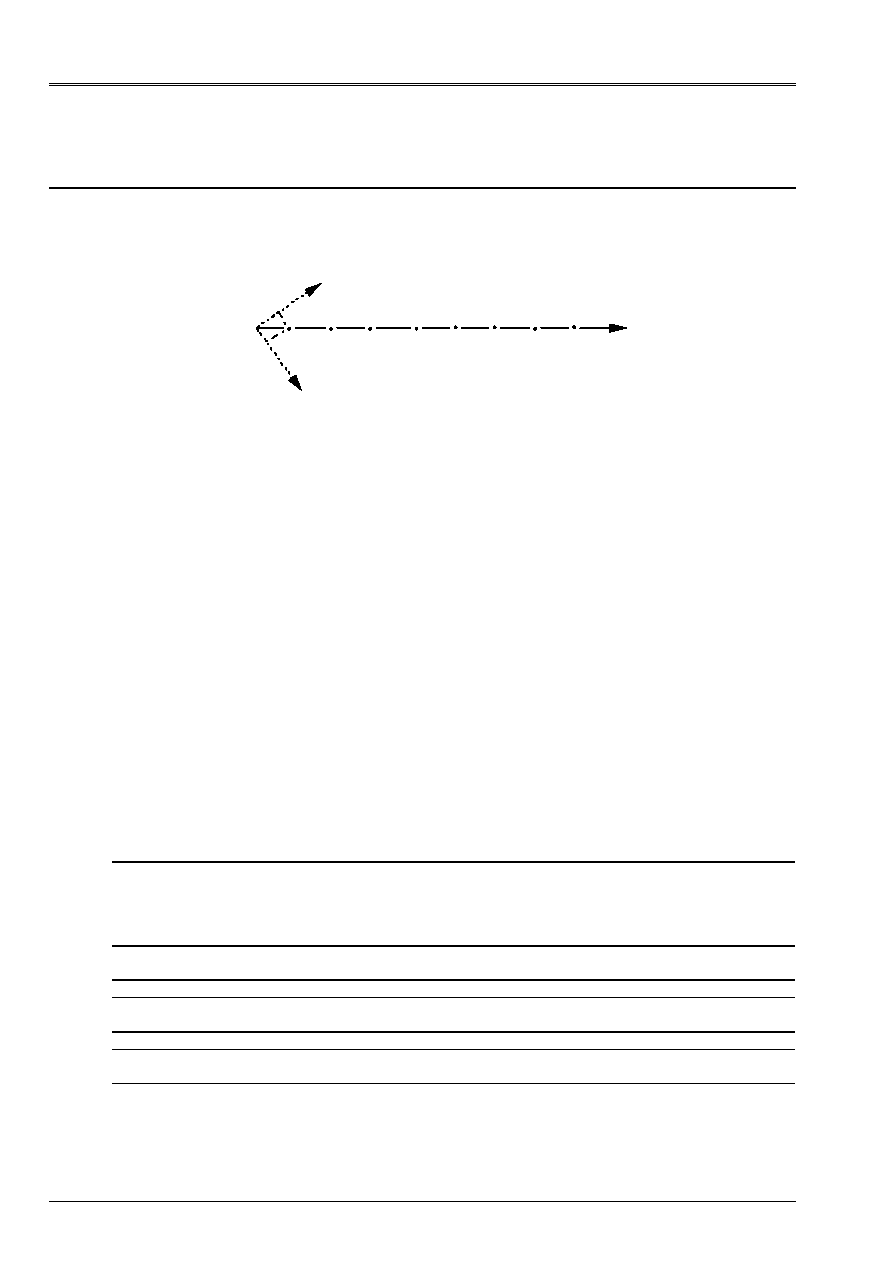
Code_Aster
®
Version
6.4
Titrate:
SDLD27 - System mass-arises with 8 degrees of freedom
Date:
17/02/04
Author (S):
E. BOYERE
Key
:
V2.01.027-C
Page:
10/14
Manual of Validation
V2.01 booklet: Linear dynamics of the discrete systems
HT-66/04/005/A
9 Modeling
D
9.1
Characteristics of modeling
Transposition of the test of reference to the case of the degrees of freedom of rotation (comes out from torsion +
inertia) by using the discrete element of rigidity in translation/rotation.
Y
X
0.3
0.4
P
1
X
P
2
P
3
P
4
P
5
P
6
P
7
P
8
Characteristics of the elements
ORIENTATION:
in all the nodes
with an angle
= 53.130102°
DISCRETE:
with nodal masses
in all the nodes
M_TR_D_N
in local reference mark
(m = 10.)
matrices of rigidity
in all the meshs
K_TR_D_L
in local reference mark
(KR
X
= 1.10
5
)
with the nodes ends
K_TR_D_N
in local reference mark
(KR
X
= 1.10
5
)
matrices of damping
in all the meshs
A_TR_D_L
in local reference mark
(CR
X
= 50.)
with the initial node
A_TR_D_N
in local reference mark
(CR
X
= 250.)
with the final node
A_TR_D_N
in local reference mark
(CR
X
= 25.)
Limiting conditions:
DDL_IMPO:
(ALL:“YES” DX: 0., DY: 0., DZ: 0., DRZ: 0. )
LIAISON_DDL:
(such as
3DRy=4DRx
in all the nodes)
Names of the nodes: P
1
,
P
2
,…., P
8
9.2
Characteristics of the mesh
A number of nodes:
8
A number of meshs and types:
7 SEG2
The nodes P
1
and P
8
are connected to a fixed fictitious node by nodal springs (K_TR_N, A_TR_N).
9.3 Functionalities
tested
Controls
DISCRETE AFFE_CARA_ELEM
GROUP_MA
“K_TR_D_L'
“A_TR_D_L'
NODE
“K_TR_D_N'
“A_TR_D_N'
GROUP_NO
“M_TR_D_N'
AFFE_CHAR_MECA DDL_IMPO
ALL
LIAISON_DDL
NODE
AFFE_MATERIAU ALL
AFFE_MODELE ALL
“MECHANICAL”
“DIS_TR”
GROUP_NO
“DIS_TR”
DEFI_MATERIAU ELAS
“CLOSE” MODE_ITER_INV CALC_FREQ OPTION
FREQ
NORM_MODE NORMALIZES MASS_GENE
9.4
Contents of the file results
Results obtained with:
CALC_FREQ: (LIST_FREQ: (6., 10., 15., 19., 24., 29., 29., 31.))
CALC_MODE: (NMAX_MODE: 75)

Code_Aster
®
Version
6.4
Titrate:
SDLD27 - System mass-arises with 8 degrees of freedom
Date:
17/02/04
Author (S):
E. BOYERE
Key
:
V2.01.027-C
Page:
11/14
Manual of Validation
V2.01 booklet: Linear dynamics of the discrete systems
HT-66/04/005/A
10 Results of modeling D
10.1 Values
tested
Frequency Reference
Aster %
Difference
Command of the clean mode 1
5.53
5.529
0.015
Command of the clean mode 2
10.90
10.897
0.025
Command of the clean mode 3
15.93
15.934
0.027
Command of the clean mode 4
20.45
20.469
0.095
Command of the clean mode 5
24.34
24.359
0.079
Command of the clean mode 6
27.49
27.512
0.082
Command of the clean mode 7
29.84
29.853
0.042
Command of the clean mode 8
31.29
31.293
0.013
Damping Reference
Aster %
Difference
Command of the clean mode 1
1.521e2
1.5210e2
0.003
Command of the clean mode 2
2.877e2
2.8747e2
0.079
Command of the clean mode 3
3.960e2
3.9525e2
0.189
Command of the clean mode 4
4.709e2
4.6924e2
0.352
Command of the clean mode 5
5.098e2
5.0899e2
0.159
Command of the clean mode 6
5.183e2
5.1550e2
0.539
Command of the clean mode 7
5.115e2
5.1180e2
0.059
Command of the clean mode 8
5.036e2
5.0160e2
0.396
Nature of the mode
clean
Not Mode
clean
Reference in 10
3
Real part
Imaginary part
Clean mode Aster
Real part
Imaginary part
% Difference
Rotation 1
(
DRx
)
1
P1
P2
P3
P4
P5
P6
P7
P8
2.442, 2.736
4.782, 4.968
6.54, 6.6
7.5, 7.5
7.5, 7.44
6.66, 6.54
4.944, 4.824
2.646, 2.55
2.4438, 2.7338
4.7789, 4.9712
6.5293, 6.6160
7.4810, 7.4724
7.5177, 7.4387
6.6352, 6.5187
4.9414, 4.8227
2.6434, 2.5515
0.076
0.064
0.207
0.316
0.169
0.350
0.045
0.082
Rotation 8
(
DRx
)
8
P1
P2
P3
P4
P5
P6
P7
P8
1.338, 0.684
2.226, 1.788
2.85, 2.646
3.15, 3.162
3.084, 3.258
2.664, 2.928
1.938, 2.214
0.996, 1.206
1.2674, 0.6692
2.2225, 1.6307
2.8626, 2.5198
3.1703, 3.1001
3.1022, 3.2965
2.6763, 3.0414
1.9423, 2.3489
1.0038, 1.2906
4.799
5.509
3.261
1.458
0.949
2.883
4.590
5.437
Clean mode normalized with the unit modal mass:
it
C
I
+ 2
I
it
M
I
= 1
is the eigenvalue associated damping and the Eigen frequency.
10.2 Contents of the file results
8 depreciation and Eigen frequencies, as well as the associated clean vectors.
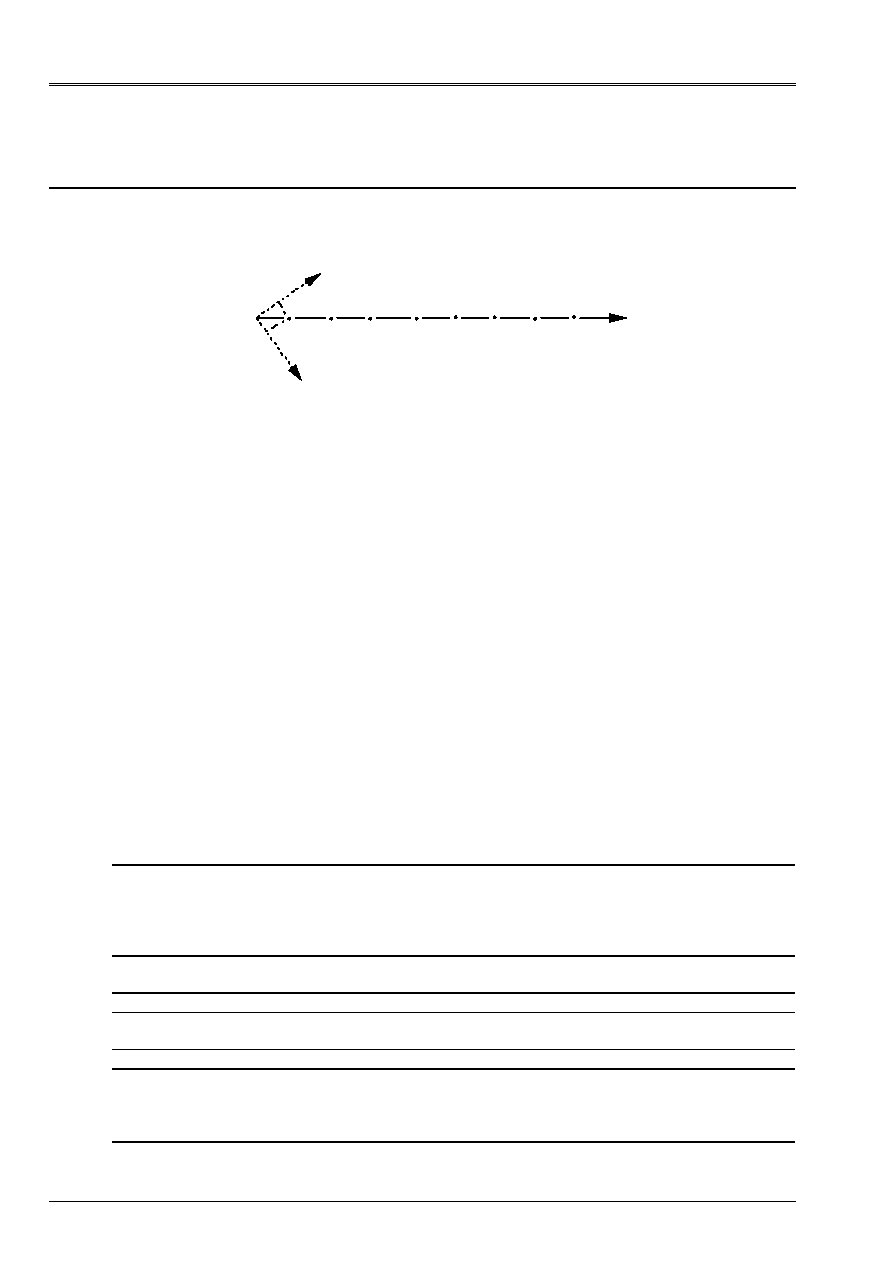
Code_Aster
®
Version
6.4
Titrate:
SDLD27 - System mass-arises with 8 degrees of freedom
Date:
17/02/04
Author (S):
E. BOYERE
Key
:
V2.01.027-C
Page:
12/14
Manual of Validation
V2.01 booklet: Linear dynamics of the discrete systems
HT-66/04/005/A
11 Modeling
E
11.1 Characteristics of modeling
Transposition of the test of reference to the case of the degrees of freedom of rotation (comes out from torsion +
inertia) by using the discrete element of rigidity in translation/rotation:
DIS_TR
Y
X
0.3
0.4
P
1
X
P
2
P
3
P
4
P
5
P
6
P
7
P
8
Characteristics of the elements
ORIENTATION:
in all the nodes
with an angle
= 53.130102°
DISCRETE:
with nodal masses
in all the nodes
M_TR_N
in local reference mark
(I
xx
= 10.)
matrices of rigidity
in all the meshs
K_TR_L
in local reference mark
(KR
X
= 1.10
5
)
with the nodes ends
K_TR_N
in local reference mark
(KR
X
= 1.10
5
)
matrices of damping
in all the meshs
A_TR_L
in local reference mark
(CR
X
= 50.)
with the initial node
A_TR_N
in local reference mark
(CR
X
= 250.)
with the final node
A_TR_N
in local reference mark
(CR
X
= 25.)
Limiting conditions:
DDL_IMPO:
(ALL:“YES” DX: 0., DY: 0., DZ: 0., DRZ: 0. )
LIAISON_DDL:
(such as
3DRy=4DRx
in all the nodes)
Names of the nodes: P
1
,
P
2
,…., P
8
11.2 Characteristics of the mesh
A number of nodes:
8
A number of meshs and types:
7 SEG2
The nodes P
1
and P
8
are connected to a fixed fictitious node by nodal springs (K_TR_N, A_TR_N).
11.3 Functionalities
tested
Controls
DISCRETE AFFE_CARA_ELEM GROUP_MA
“K_TR_L'
“A_TR_L'
NODE
“K_TR_N'
“A_TR_N'
GROUP_NO
“M_TR_N'
AFFE_CHAR_MECA DDL_IMPO ALL
LIAISON_DDL
NODE
AFFE_MATERIAU ALL
“MECHANICAL” AFFE_MODELE VERY
“DIS_TR”
GROUP_NO
“DIS_TR”
DEFI_MATERIAU ELAS
MODE_ITER_SIMULT METHOD
“TRI_DIAG”
CALC_FREQ
OPTION
“CENTER”
FREQ
NMAX_FREQ
NORM_MODE NORMALIZES
MASS_GENE

Code_Aster
®
Version
6.4
Titrate:
SDLD27 - System mass-arises with 8 degrees of freedom
Date:
17/02/04
Author (S):
E. BOYERE
Key
:
V2.01.027-C
Page:
13/14
Manual of Validation
V2.01 booklet: Linear dynamics of the discrete systems
HT-66/04/005/A
12 Results of modeling E
12.1 Values
tested
Frequency Reference
Aster %
Difference
Command of the clean mode 1
5.53
5.529
0.0154
Command of the clean mode 2
10.90
10.896
0.0374
Command of the clean mode 3
15.93
15.927
0.0190
Command of the clean mode 4
20.45
20.452
0.0113
Command of the clean mode 5
24.34
24.336
0.0185
Command of the clean mode 6
27.49
27.487
0.0105
Command of the clean mode 7
29.84
29.835
0.0163
Command of the clean mode 8
31.29
31.295
0.0154
Damping Reference
Aster %
Difference
Command of the clean mode 1
1.521e2
1.5209e2
0.007
Command of the clean mode 2
2.877e2
2.8757e2
0.043
Command of the clean mode 3
3.960e2
3.9565e2
0.09
Command of the clean mode 4
4.709e2
4.7034e2
0.119
Command of the clean mode 5
5.098e2
5.0917e2
0.124
Command of the clean mode 6
5.183e2
5.1764e2
0.126
Command of the clean mode 7
5.115e2
5.1084e2
0.128
Command of the clean mode 8
5.036e2
5.0296e2
0.126
Nature of the mode
clean
Not Mode
clean
Reference in 10
3
Real part
Imaginary part
Clean mode Aster
Real part
Imaginary part
% Difference
Rotation 1
(
DRx
)
1
P1
P2
P3
P4
P5
P6
P7
P8
2.442, 2.736
4.782, 4.968
6.54, 6.6
7.5, 7.5
7.5, 7.44
6.66, 6.54
4.944, 4.824
2.646, 2.55
2.4440, 2.7331
4.7791, 4.9707
6.5293, 6.6158
7.5481, 7.4725
7.5177, 7.4388
6.6351, 6.5189
4.9413, 4.8226
2.6433, 2.5518
0.096
0.058
0.205
0.315
0.168
0.349
0.045
0.088
Rotation 8
(
DRx
)
8
P1
P2
P3
P4
P5
P6
P7
P8
1.338, 0.684
2.226, 1.788
2.85, 2.646
3.15, 3.162
3.084, 3.258
2.664, 2.928
1.938, 2.214
0.996, 1.206
1.3401, 0.6834
2.2264, 1.7855
2.8528, 2.6488
3.1492, 3.1613
3.0833, 3.2575
2.6640, 2.9259
1.9404, 2.2111
0.9958, 1.2072
0.150
0.087
0.101
0.024
0.019
0.052
0.128
0.081
Clean mode normalized with the unit modal mass:
it
C
I
+ 2
I
it
M
I
= 1
: is the eigenvalue associated damping and the Eigen frequency.
12.2 Contents of the file results
8 depreciation and Eigen frequencies, as well as the associated clean vectors.

Code_Aster
®
Version
6.4
Titrate:
SDLD27 - System mass-arises with 8 degrees of freedom
Date:
17/02/04
Author (S):
E. BOYERE
Key
:
V2.01.027-C
Page:
14/14
Manual of Validation
V2.01 booklet: Linear dynamics of the discrete systems
HT-66/04/005/A
13 Summary of the results
For all the options of modeling of the discrete elements of rigidity, of mass and
of damping offered by
AFFE_CARA_ELEM
the solutions obtained are those of the solution of
reference (frequencies and clean modes).













